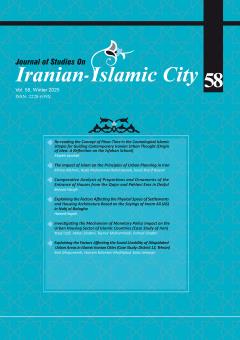-
-
-
Open Access Article
1 - Introduction to the concept of “up” and “down” in the event of archetype Islamic-Iranian architecture with an emphasis on distinguishing between the semantic fields of people attitudes (Cases study: Toopkhane square, Laleh Park, shahzade garden, naqhsh-e- jahan square)
Naser Barati elham kakavand -
Open Access Article
2 - Reading the meaning of mandala in the pattern of Behnam and Qadaki Qajar houses of Tabriz
sara pourmokhtar Mohammadreza pakdelfard Hassan Sattari
List of Articles انگاره
-
The rights to this website are owned by the Raimag Press Management System.
Copyright © 2017-2025


